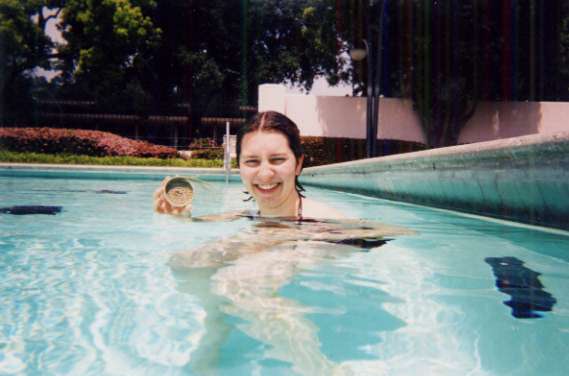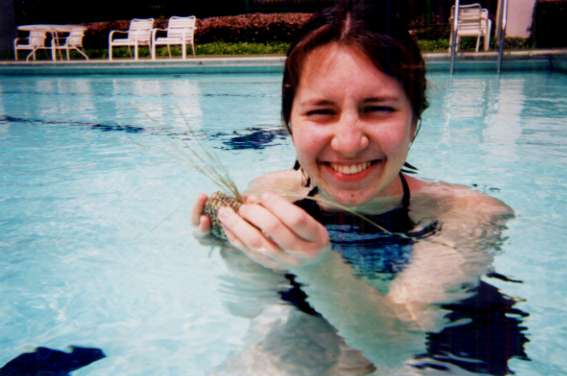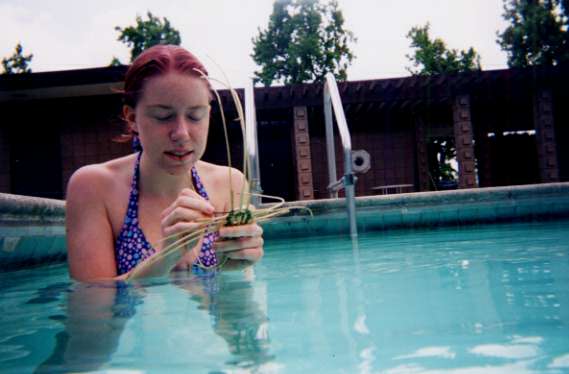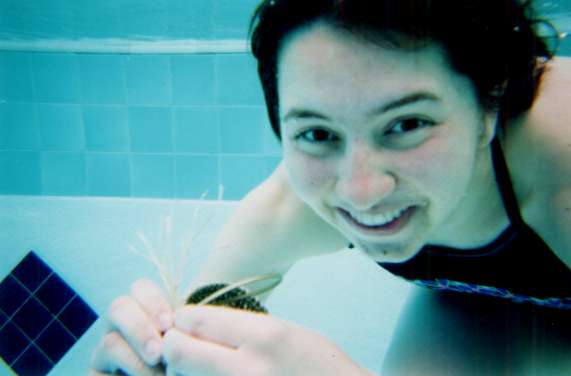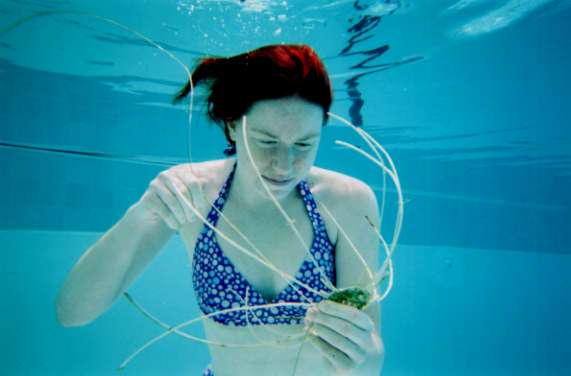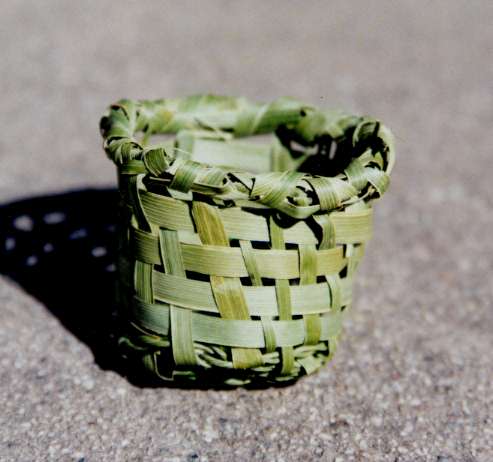
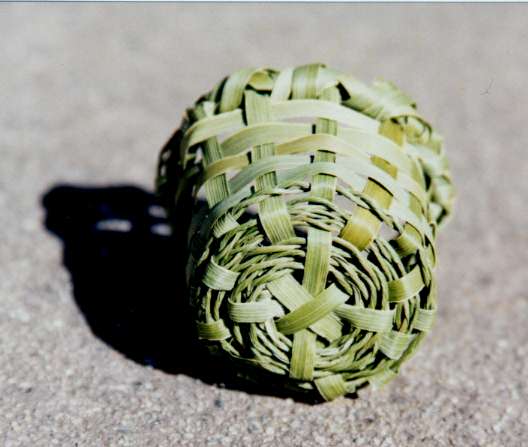
Given that we cannot reproduce authentic Native American baskets, we imitated and we followed patterns to produce baskets of our own culture with the materials and the tools available to us.
February 8, 2002: We attempted our first baskets.
Sarah: We collected our materials from palm trees and bush grass in the area. I made a tiny twined basket using the palm fronds and instructions from Just Patterns. I adapted the instructions to work with the materials at hand. I modified the base from 16 to 8 spokes because of a general lack of materials. For the spokes I used palm fronds split into 4; for the twining on the base I used palm fronds split in half and twisted together to make a sort of rope. I then split one of the spokes in two so there would be an odd number of spokes, and wove other quartered palm fronds continuously until the top. For the rim, I placed another "rope" around the top and wove the ends of the spokes around it to secure everything. This came out pretty messy -- I need a neater, more systematic method for doing this. The basket in general seems pretty fragile. I think that the twining is supposed to be done in separate rows, not continuously, but I'm not really sure. The finished basket is 2 inches tall and about 2.5 inches in diameter.
Allison: I tried my hand at a coiled basket using palm fronds, bush grass and instructions from the NW Basketweavers. After I made the start I needed to use a needle to pierce the previous coils. Unfortunately the needle bent after only a few loops so I didn't get very far, as you can see. The central coiling is about an inch in diameter.
February 28, 2002: Collecting materials
Sarah: Today we went on a mission to collect materials. From the book Natural Basketry, we discovered that honeysuckle vines are a good material to use in twined basketry.[2] Since we knew where some honeysuckle happens to grow close by, we investigated the vine. As suggested in the book, we looked at the vines growing close to the ground. There were some very long, flexible vines, which definitely seem good for making twined baskets. We gathered quite a few. We also collected a bit of deer grass, and some other plants that looked like possibilities. When we got back, I wound the honeysuckle vines in a circle and bound them together to store them. We still need to prepare them before weaving with them, which, according to Natural Basketry, involves boiling them for three hours, as well as a few other things. We'll have to come up with some way to do that. At least we have some good materials to start with now.
A picture of some bush grass: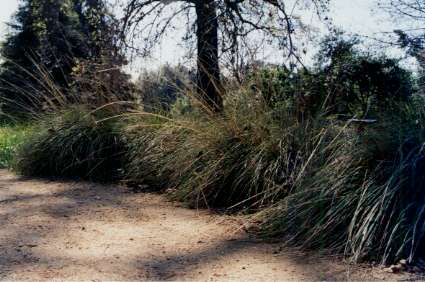
April 5, 2002: Coiled Basket
Allison: I collected long palm fronds and pine needles for another attempt at a coiled basket. I used the same site as last time to make a start. This time I was more successful. My start shows my lack of developed craftsmanship, but luckily the weaving was much easier after the start. I used pine needles for the filler and palm fronds for coiling or sewing material. To weave it I used an awl to pierce the top of the previous coil then pushed a split palm frond through the hole. When the pine needle bundle would run low I pushed more pine needles into the bundle. I tried to keep the bundle about the same thickness. I also kept the materials wet while I wove because that made them easier to work with. After I made a base that was about 2.5 inches or 6 cm I started the weave going upward to create the sides of the basket. The process of weaving is a long process. The pictures are of 5 hours and 7 hours spent on the basket. 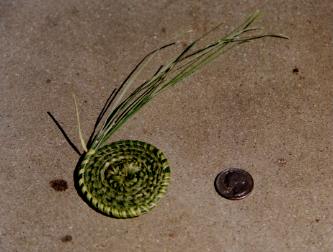
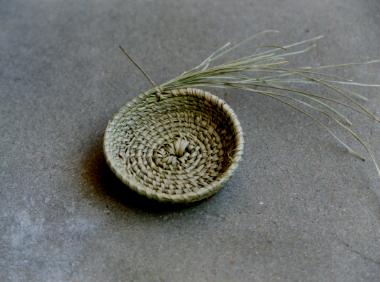
April 23, 2002: Underwater Basket Weaving
Sarah and Allison: The big day we'd been waiting for all semester. We went to the pool and brought our baskets!
Sarah: I was just beginning a new basket -- twined with honeysuckle vine (the stuff we had prepared earlier) and some random plant we found in the Pitzer outback that we had split into 4 or 5 pieces of uniform width. I used the book Indian Basket Weaving to guide my basket [6].
Allison: At the pool, I continued to work on my coiled basket, which is in the traditional Cahuilla style. I didn't get much done because it was so cold. However, I found it very difficult to weave because when the basket was continually soaked, the filler expanded. This made it difficult to pierce the previous coil.
Sarah and Allison: But really, the most important thing here was that we actually did underwater basketweaving -- and got credit for it. Here's the proof:
